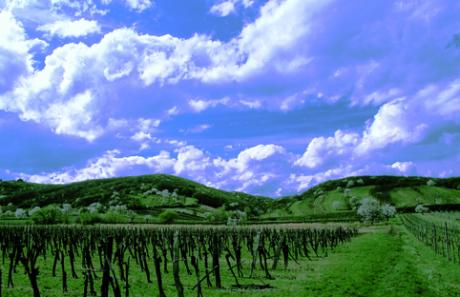The Leitha Mountains
 The gently sloping slopes of the Leitha Mountains lie at the transition from the Alps to the Little Hungarian Plain. On a comparatively small area you will find an extraordinary variety of plant and animal species.
The gently sloping slopes of the Leitha Mountains lie at the transition from the Alps to the Little Hungarian Plain. On a comparatively small area you will find an extraordinary variety of plant and animal species.
The natural and cultural landscape merges smoothly and consists mainly of forest stands, forest edge biotopes, dry grasslands, vineyards and orchards, up to the salt marshes on the lake foregrounds. This is based on a natural phenomenon due to the coincidence of several plant geographical areas and also due to the cultivation of the landscape by humans.
Foothills of the Central Alps
 In the central and upper slopes of the average 400 m high Leitha Mountains, the crystalline basement (mica slate, quartzite slate) comes to light. The slope foot is predominantly built up by Leitha limestone (former coral-reefs of the inland sea). The mountain range is interrupted by smaller side valleys, which carry water at least periodically and are accompanied by ash trees. The higher altitudes are mainly covered by oak and hornbeam forests, which have pushed back the red beech as a result of the use of coppice. The dominant tree species are grape and hornbeam oaks and hornbeams. On dry and warm slopes there are downy oak, field elm and field maple. In addition, various coniferous trees, especially pines, have been introduced into the forest. Through deforestation, drainage, hunting and grazing, the people living here have over the centuries created a cultural landscape in which the economic use and conservation of semi-natural habitats are in harmony. The landscape is characterized to a considerable extent by vineyards and cherry trees.
In the central and upper slopes of the average 400 m high Leitha Mountains, the crystalline basement (mica slate, quartzite slate) comes to light. The slope foot is predominantly built up by Leitha limestone (former coral-reefs of the inland sea). The mountain range is interrupted by smaller side valleys, which carry water at least periodically and are accompanied by ash trees. The higher altitudes are mainly covered by oak and hornbeam forests, which have pushed back the red beech as a result of the use of coppice. The dominant tree species are grape and hornbeam oaks and hornbeams. On dry and warm slopes there are downy oak, field elm and field maple. In addition, various coniferous trees, especially pines, have been introduced into the forest. Through deforestation, drainage, hunting and grazing, the people living here have over the centuries created a cultural landscape in which the economic use and conservation of semi-natural habitats are in harmony. The landscape is characterized to a considerable extent by vineyards and cherry trees.
Those who love the warmth
The Leitha Mountains contain not only a Central European fauna but also many warmth-loving animal species such as the dormouse and the fat dormouse. The loop snake and the Aesculapian snake are just as characteristic of the warm deciduous forests as the splendidly colored emerald lizard.
